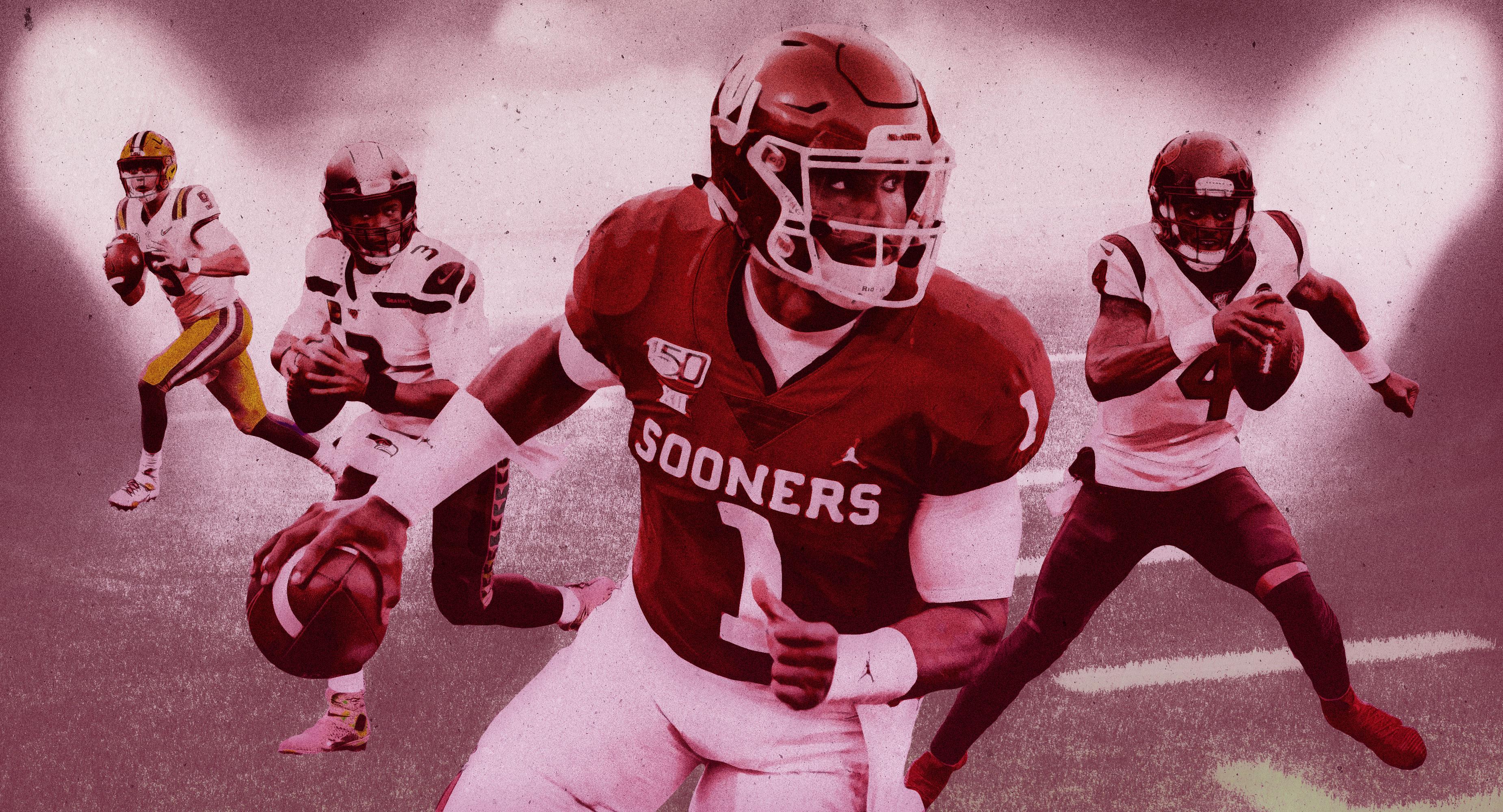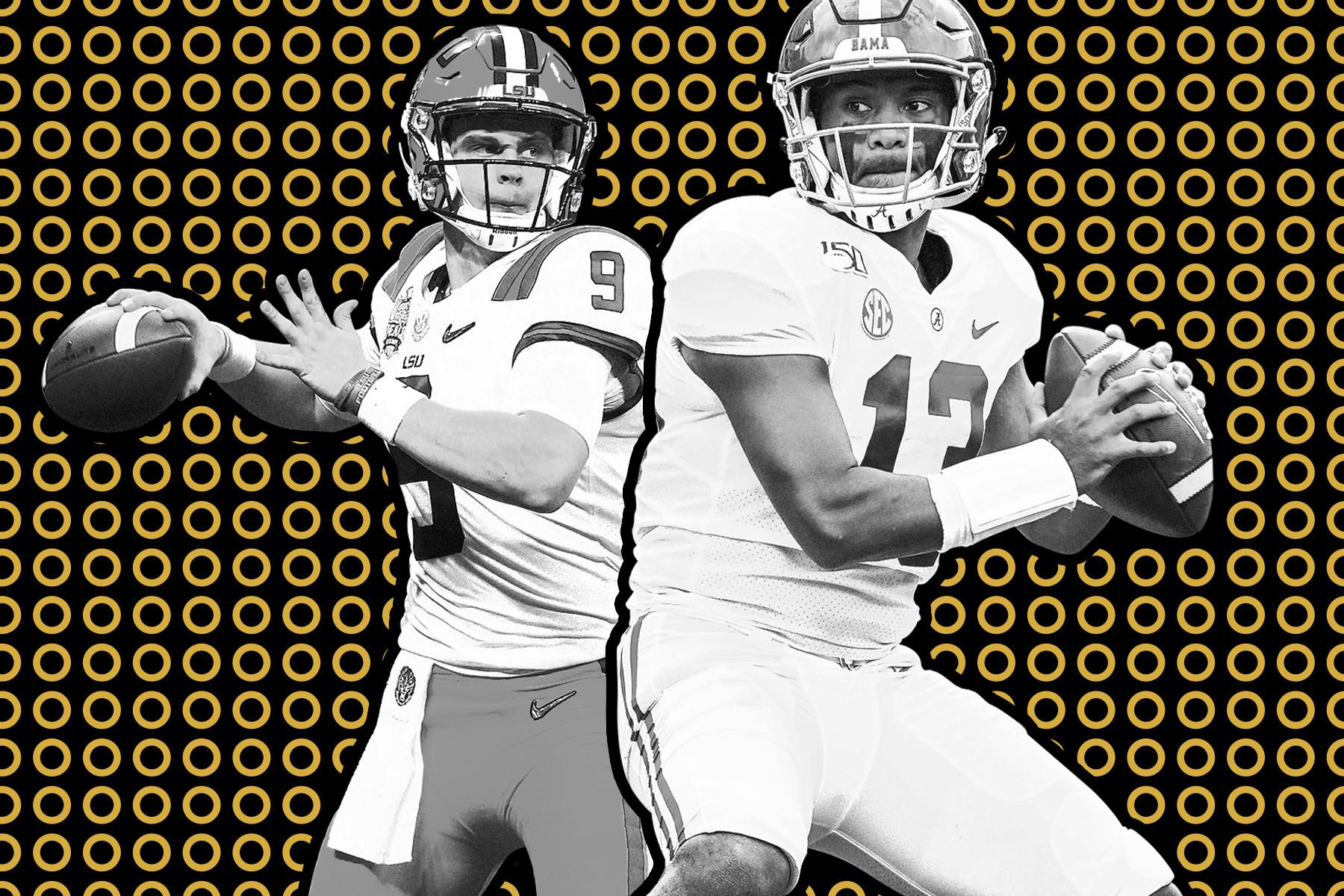How a Generation of Playmaking Stars Changed QB Scouting Forever
For decades, QBs who could extend plays and make off-schedule throws were considered a luxury. Not anymore. The prototype NFL passer is changing—look no further than the 2020 draft.Even if Quincy Avery doesn’t love the comparison between Jalen Hurts and Lamar Jackson, he’ll take it. As a quarterback expert who appreciates the subtleties of the position, Avery cringes each time someone crudely lumps his newest pupil and the reigning MVP together. But he also sees the benefits. “It’s interesting to me because they’re so different, but people in the evaluation process think they’re the same because they’re both athletic,” Avery says. “I think it’s silly, but it might end up being helpful for Jalen.”
Avery is a respected quarterback trainer based in Atlanta, and Hurts is his latest protégé. After losing the Alabama starting job to Tua Tagovailoa in 2018, Hurts transferred to Oklahoma for his final year of eligibility. Last fall, he threw for 3,851 yards and rushed for another 1,298—joining Jackson and Johnny Manziel as the only players in college football history to rack up 3,000 yards through the air and 1,000 yards on the ground in a single season. Hurts is considered by most to be a Day 2 prospect in this year’s draft, and Avery believes he’d be projected even higher if he weren’t carrying the baggage from his stint at Alabama.
By now, Avery is familiar with tutoring sought-after NFL prospects. Three years ago, he went through the draft gantlet with his most famous student, Deshaun Watson. Watson had a historic career at Clemson, but fell to the 12th pick—an oversight that Avery attributes to the glacial pace of NFL groupthink. Even three years ago, NFL teams didn’t quite know what to make of Watson’s ability to conjure plays out of thin air and break defenses’ hearts in the process. “I don’t think they dug deep enough into it to understand truly how important it was,” Avery says. “I don’t think they understood that coming into the league, guys would really need that, and it was going to change the way that guys play.”
For decades, mobile, playmaking quarterbacks were considered a novelty in the NFL. The ability to extend plays or pick up yards on the ground was a luxury, not a necessity. Every so often, a fleet-footed QB like Steve Young or Michael Vick would come along and make waves, but coaches and evaluators still largely clamored for big pocket passers who worked within the confines of an offense. Recently, though, that stance has softened.
As playmaking QBs like Watson, Jackson, Russell Wilson, and Patrick Mahomes have taken over the sport, coaches and executives have been forced to revise the way they evaluate the position. Functional mobility and skill with off-schedule throws are no longer added bonuses for high-end prospects. They’re prerequisites. Over the past few seasons, nearly every QB drafted in the top 10—including Baker Mayfield, Josh Allen, and Kyler Murray—has showcased an ability to move around and make off-platform throws. That trend should only continue this week, with adaptable QBs like Joe Burrow, Tua Tagovailoa, and Jordan Love all expected to be taken in the first round. “Jared Goff, in my opinion, is the last good, [highly drafted] QB who can’t move,” says private quarterback coach Jordan Palmer, whose clients include Burrow and Allen.
As the NFL game has spread out and sped up, the quarterback’s role has changed. The way that longtime NFL passer Sage Rosenfels sees it, the QB’s evolution has mirrored that of the NBA point guard. “I look at Kirk Cousins like a John Paxson,” Rosenfels says. “John did not create offense. He hit the open shot when everything was just right. That’s Kirk Cousins. Pat Mahomes is Steph Curry. Not only can he hit the open shot—he can create a whole bunch of offense when things break down.”
The quarterback position has entered a brand-new era. Functionally mobile passers have become the blueprint at every level of the game. And that shift has reshaped what teams are looking for in the draft. “It’s really cool to look at the evolution of the game,” says Jake Heaps, Wilson’s personal QB coach. “I think it’s absolutely changed the minds of evaluators at every level about what can be functional at the QB position, what can be successful, and what can be the most dangerous.”
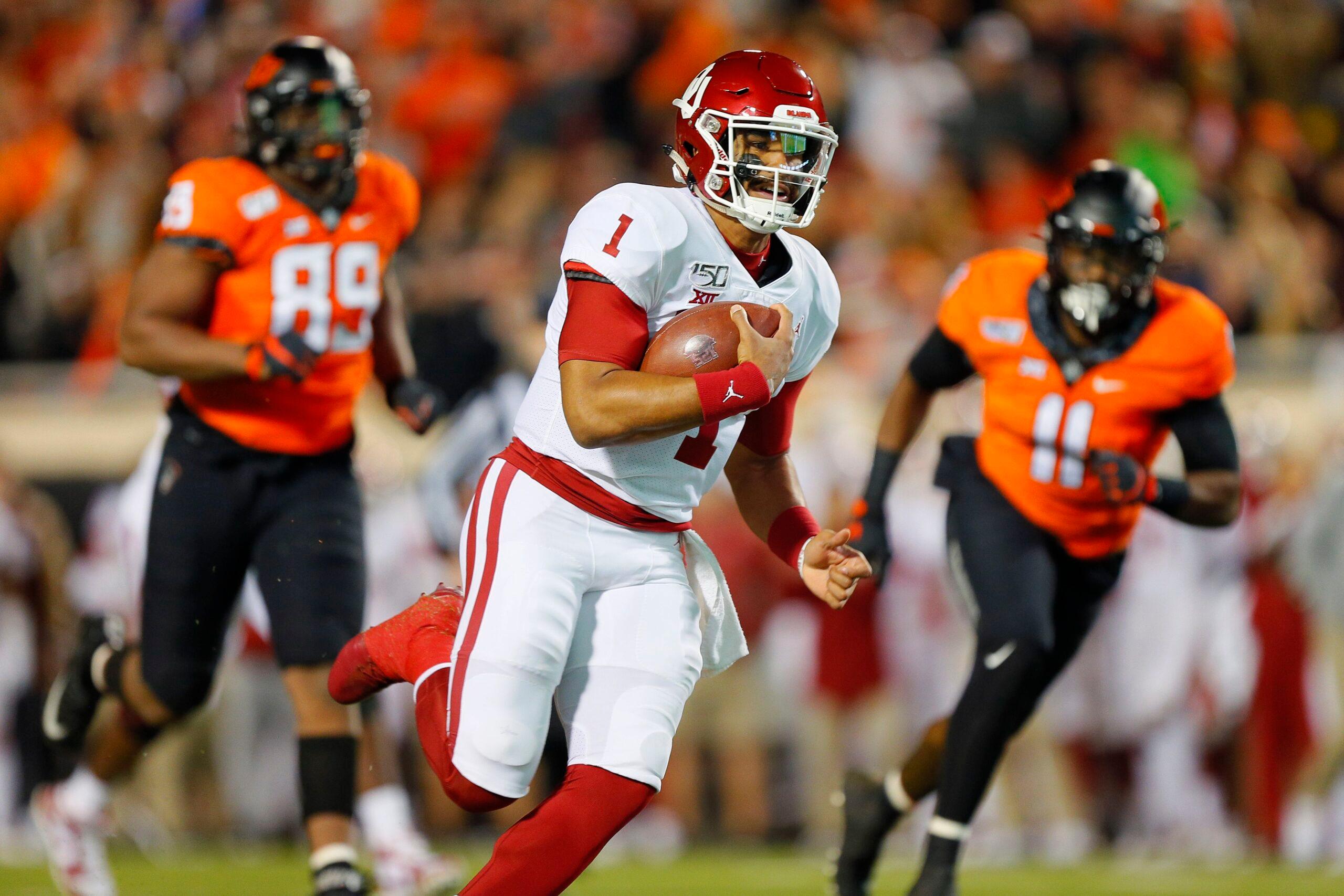
Before the most recent generation of passers turned the sport on its head, QB evaluation had remained fairly formulaic for decades. Scouts spent the bulk of their time studying how a quarterback threw, prioritizing accuracy, anticipation, and timing over factors like elusiveness and rushing skills. Even when coaches dug into the minutiae of a prospect’s game, they focused more on situational factors like red zone performance and third-down efficiency than on off-schedule playmaking. “There was the added consideration of ‘OK, can this individual extend the play? Can he escape the rush? Is he a scrambling threat?’” says Mike Sullivan, who spent eight seasons as an NFL quarterbacks coach and offensive coordinator from 2010 to 2018. “But I don’t think it was quite as high up the [list of] priorities.”
The first NFL coaches to truly appreciate the upside of mobile quarterbacks were actually the ones tasked with stopping them. During his four decades as a defensive coordinator, Wade Phillips found that quarterbacks who could consistently keep plays alive gave him the most headaches. “Even the great ones, you didn’t have to worry about Brady [running],” Phillips says. “You’d try to beat your guy and try to get to him, because you knew he wasn’t going to be able to run or extend the play very long. And Peyton Manning, same way. I mean, those are great, great players, but they were going to be in the pocket.”
I look at Kirk Cousins like a John Paxson, who did not create offense. He hit the open shot when everything was just right. Pat Mahomes is Steph Curry.Sage Rosenfels
Both Manning and Brady were experts at deciphering defenses, but neither forced Phillips and other coordinators to drastically alter their approaches. This new crop of quarterbacks, on the other hand, makes unleashing aggressive tactics like tight man coverage and pattern-match zones a much riskier proposition. “Anytime you play man, you’re susceptible to a running quarterback,” Phillips says. “That’s what we worried about with Cam Newton when we played him. You can play man, but then he’s able to run off with it. So, yeah, those guys give us all kinds of problems.”
As coordinators prepare for mobile quarterbacks, they have to choose where—not if—their defense will be vulnerable. By harping on the importance of maintaining rushing lanes or using a spy, teams sacrifice their pass rush and put undue pressure on the secondary. If a coordinator decides to blitz to force a QB into a decision, the defense is susceptible to getting gashed on the ground. “If you gave truth serum to every defensive coach out there, and there was no coachspeak ... I guarantee you 99.9 percent of them would say they would rather face an immobile, statue ‘pocket passer’ in today’s game than someone à la Deshaun Watson, Patrick Mahomes, Aaron Rodgers,” Sullivan says.
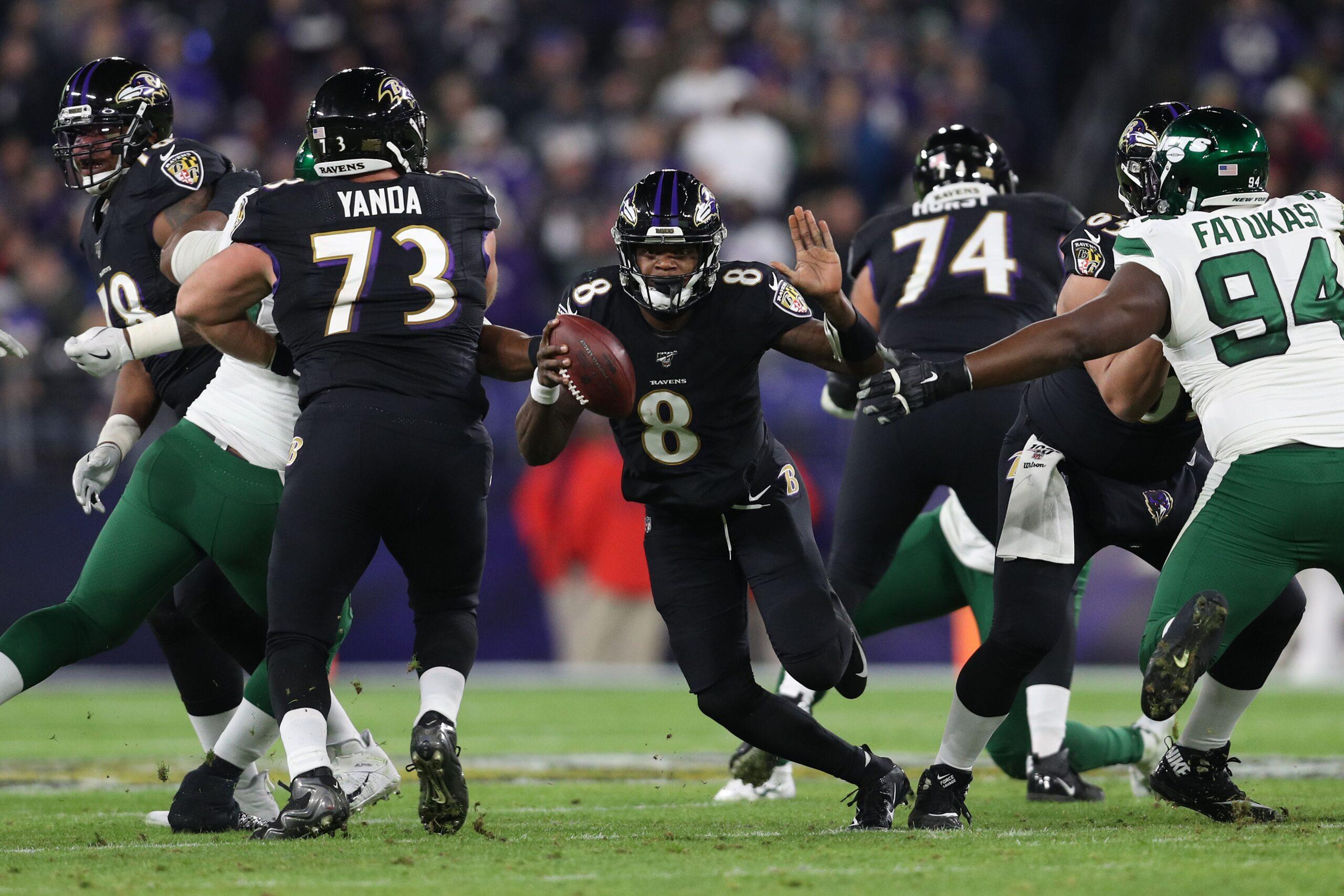
Thirty years before he started coaching Lamar Jackson, James Urban was just another Pennsylvania teenager with a poster of Randall Cunningham on his wall. The Ravens quarterbacks coach says that while off-schedule playmakers are now at the forefront of the league, players who could create on their own have been around throughout the NFL’s history. “Those are the guys I’ve looked up to, and the fact is, there have been highly successful Hall of Fame mobile quarterbacks going all the way back—Roger Staubach, Fran Tarkenton, John Elway, and Steve Young,” Urban says. “There have always been guys who can run around and make plays.”
Athletic quarterbacks aren’t a new concept, but NFL teams have traditionally struggled to properly utilize them—or given up too early in the process. Part of that has to do with a lack of imagination. And part of it unmistakably has to do with race, as pocket-passing white quarterbacks have often been allowed to fail in ways that playmaking black quarterbacks have not. But at every level of football, coaches have become more open-minded about putting the ball in their best athlete’s hands and letting them work through growing pains that might have once derailed QB careers. “This next batch [of young quarterbacks]—and this is just a guess—they will have been given the ability to fail more,” says Joey Roberts, the director of personnel for Elite 11. “That’s the fruit of the labor of the guys we’re seeing on Sundays. [With] some of the guys coming down the pipe, in a world 10 to 15 years ago, it would have been, ‘Go take your ball and put it on the sideline … you’re not a quarterback anymore.’”
If you gave truth serum to every defensive coach out there, and there was no coachspeak ... I guarantee you 99.9 percent of them would say they would rather face an immobile, statue ‘pocket passer’ in today’s game than someone à la Deshaun Watson, Patrick Mahomes, Aaron Rodgers.Mike Sullivan
The viability of players like Jackson and Watson has produced a trickle-down effect, but a decade ago, influence flowed in the other direction. Like it has so often, the league turned to college football as a source for innovation for how to best deploy its influx of electric QBs. By 2010, the spread option had taken over the collegiate ranks. Rich Rodriguez had popularized the system during his tenure at West Virginia, and it wasn’t long before the top programs in the country had adopted it. Coaches like Urban Meyer at Florida were building their offenses around quarterbacks who could run and throw, which meant that some of the best athletes in the sport were being given the chance to play QB. In the fall of 2010, a former Meyer recruit named Cam Newton lit the college football world on fire at Auburn. The following spring, the Panthers took Newton with the first pick in the NFL draft.
Newton’s arrival coincided with a change in how the NFL both judged and deployed quarterbacks. Over the next two seasons, Russell Wilson, Colin Kaepernick, and Robert Griffin III all found success as dual threats. Teams judiciously folded in some of the option principles that had become commonplace in college, and for the first time, QBs in the modern NFL were given a framework for how to channel their mobility. Perceptive coaches like Kyle Shanahan and Andy Reid also found ways to implement spread concepts to help their quarterbacks acclimate to the league more quickly. “Those guys were the first wave of, ‘OK, the college system has something going on here,’” Heaps says. “It’s not something that can be a staple of the every-down run game like it is in college, but we can sprinkle it in here and there, and it can be effective.”
Heaps started his career at BYU the same year that Newton took the sport by storm. The former four-star recruit was as traditional as traditional gets—a dropback passer who worked tirelessly on the robotic QB movements that had long defined the position. But by the time he left college four years later, the entire football landscape had changed. “I was really caught in that transition,” Heaps says. “My training when I was younger, you talk about throwing on the run, things like that. I never trained for the play breaking down and scrambling off to your left and throwing off-platform and awkward throws. That wasn’t even a conversation when I was coming up.”
That shift may be part of the reason why the league suffered a quarterback shortage in the years after Wilson and Griffin came into the league. The sport had irrevocably changed, but the conventional wisdom for how a QB should look and play hadn’t yet caught up, as teams continued to draft prototypical passers like Brock Osweiler and Christian Hackenberg over elusive playmakers like Wilson and Dak Prescott. Early in his career, Wilson’s detractors argued that he and his contemporaries were little more than a passing fad, and that gimmicky offenses predicated on quarterback runs and backyard tactics would never lead to sustainable production. That notion has all but disappeared over the past few seasons. Rather than seeing Wilson’s improvisational spirit or Mahomes’s creative flair as complications, forward-thinking coaches have embraced them as a way to amplify a team’s offensive system. “It took a guy like Andy [Reid] to say, ‘You know what? I’m kind of getting a feel that if I stick right now to where I’m at, I’m going to get passed by,’” Roberts says. As those QBs have excelled, the NFL has sought to find other players who provide the same unpredictable element.
“When Russell was playing in 2012, 2013, he was considered a guy who couldn’t get it done from within the pocket and relied on his legs to create these incredible plays,” Heaps says. “In top-10 quarterback conversations, Russell Wilson would never be found. Now, you look at it today, Patrick Mahomes, Deshaun Watson, Lamar Jackson—all of these guys, their traits are embraced in a way that was not there when guys like Russell Wilson first came into the league.”
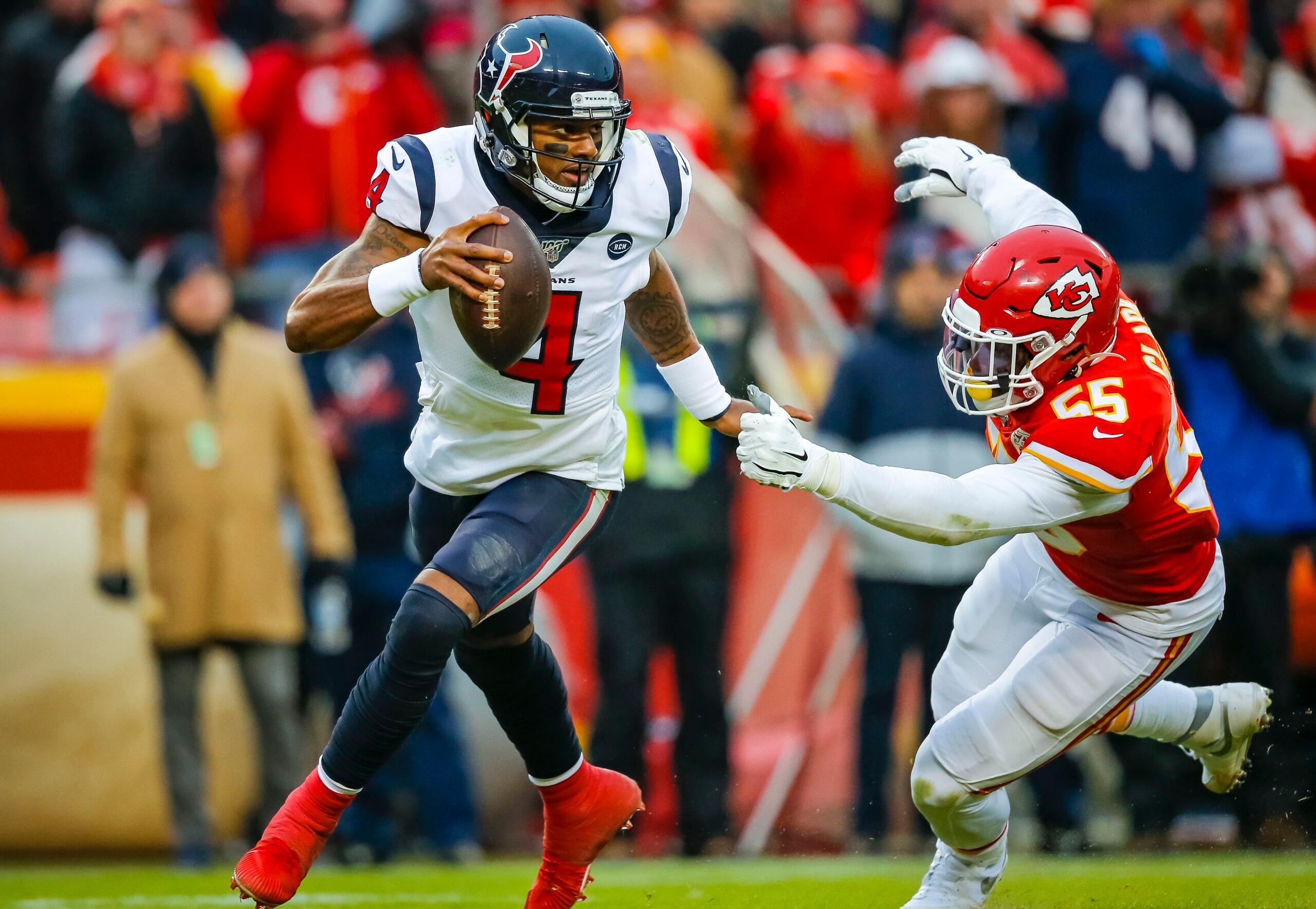
Schematic evolution has played a large role in creating more opportunities for athletic quarterbacks, but other more organic factors have contributed, too. Joey Roberts watches a lot of high school football, and says that the biggest gap in talent at lower levels of the sport comes along the offensive and defensive lines. High school edge rushers are more explosive and dominant than ever, but offensive line play has largely plateaued. “Putting together a cohesive offensive line at the high school level, there’s probably about 50 in the country out of the 15,000 that can do it where you have a clean pocket every time,” Roberts says. “For the most part, you’re getting free rushers. You’re getting edge rushers that are going to be right in front of your face.”
Those concerns aren’t limited to high school, either. As NFL defenses have gotten more complex and a lack of practice time has contributed to stagnation along the offensive line, quarterbacks have been forced to overcome breakdowns in protection. “Lamar is the X factor,” Urban says. “When they get us on the blitz or they scheme us and we don’t have the protection quite right, or it’s just a tough blitz to pick up or a stunt, Lamar can make it right by making the guy miss or extending the play or running around and doing one of those plays that he can do.”
Avery’s epiphany on this subject came in 2014, during Joshua Dobbs’s sophomore season at Tennessee. A disproportionate number of the Vols’ best plays that year came after Dobbs escaped the rush, reset his feet, and launched a throw down the field. Avery had worked on off-platform throws with his quarterbacks in the past, but that year he decided to go all in—to make the entire plane out of the black box. “It was always something I did, but now I probably put more emphasis on it than anything else,” Avery says. He isn’t alone in those efforts.
We can’t cater to what people want, because the only way we can allow the younger generation to do what they want to do and be who they want to be is us being authentic to us.Quincy Avery
Heaps and Palmer have both shaped their curriculum around helping quarterbacks make more off-schedule plays. Each offseason, Heaps charts every throw that Wilson made the previous year and notes his movements. They then take those scenarios and try to visualize them in real time. “It’s been a really cool dynamic of him and I saying, ‘OK, here’s this situation: The defensive tackle beats a guard, and now you’ve got to take one step to your right and go full speed at an angle forward while a deep cross is coming across the field,’” Heaps says. “You’ve got to make this throw four steps after you make that initial movement to your right.”
Palmer compares his methodology to boxing. Rather than throwing scattered punches, he wants his QBs to think in terms of combinations and counters. And just like boxers can refine those skills, even the most gifted quarterbacks can grow more precise with how they approach extending plays and delivering off-platform throws. “I can’t simulate [a QB] getting tackled, getting hit, any of those things,” Palmer says. “But I can simulate the types of movements that you’re going to be asked to do, and then put you in a position to have to reorganize and get back consistently over and over again. I think you can train a lot of that stuff.”
Quarterbacks like Wilson, Watson, and Josh Allen have been shaped by this very approach—the pursuit of adding structure to unstructured plays. “That’s what it’s really about,” Heaps says. “Getting guys to be comfortable in those situations. Getting comfortable being uncomfortable.” As a result, this generation of quarterbacks can operate within a traditional scheme and improvise when that setting crumbles unlike any group that’s come before.
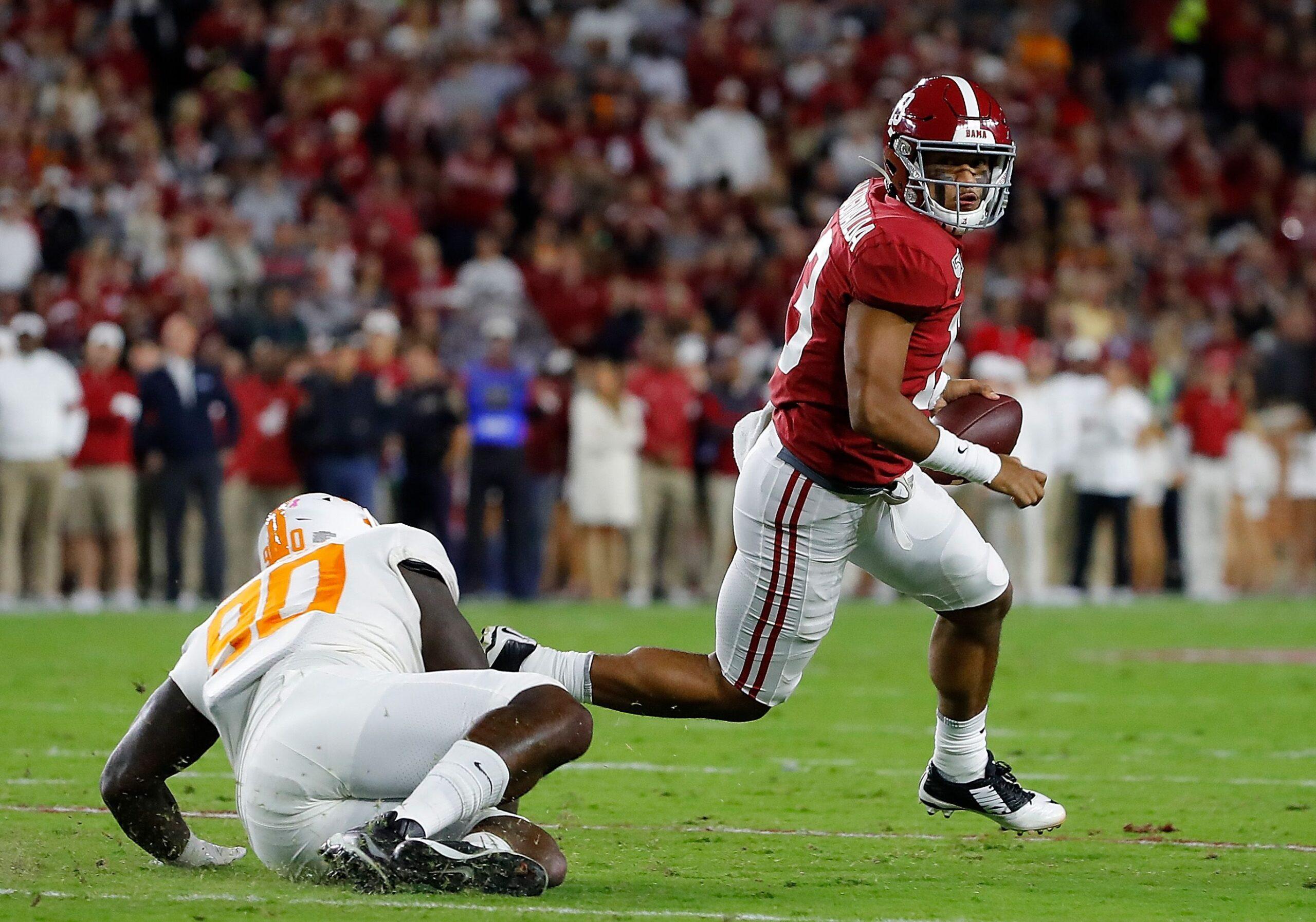
Sullivan reached his tipping point with mobile quarterbacks ahead of the 2017 draft. At the time he was the Giants offensive coordinator, and the staff was scouting possible successors to Eli Manning. Playmaking quarterbacks like Rodgers and Wilson had caught his attention in the past, but this was the first time he watched prospects like Watson and Mahomes—and he couldn’t stop imagining the possibilities. He was enamored of the thought of what they could do, rather than what they couldn’t. “I was very impressed, very intrigued, and being very ‘Man, what if?’” Sullivan says. “You kind of think about it like, ‘Man, I wonder what this would be like.’ Almost like a mad scientist. ‘Boy, this is really cool, what can I do with this?’”
The success that both Watson and Mahomes have had in their first few seasons helped reshape the perception of how a superstar quarterback should play, but Jackson is the one who drastically altered it forever. In 2016, Avery watched from the stands as Watson’s Clemson team took on Jackson’s Louisville squad. Even as a staunch believer in the direction that QB evaluation was going, he had doubts about Jackson’s future. “I just remember thinking, ‘That’s the fastest guy on the field,’” Avery says. “But I didn’t leave that game thinking he was ever going to be an MVP quarterback. He’s changed the way I look at it. If I ever see someone that dynamic, I’d want to give him a chance.”
Even as Jackson has lit up defenses around the league, there’s no denying the impact that racial bias continues to have on the discussion surrounding playmaking black quarterbacks. But Avery hopes that the success of Jackson, Watson, and others may help correct that imbalance in the future. “I think it encourages [coaches] to let guys on their team who may play in the same way that those guys are playing,” Avery says. “It allows them to see them as quarterbacks.” Jackson’s decision to tell anyone who’d listen that he was a quarterback, through and through, was a statement about the importance of embracing unique talents at the position. “You have to be yourself,” Avery says. “We can’t cater to what people want, because the only way we can allow the younger generation to do what they want to do and be who they want to be is us being authentic to us, and being successful when you get to the NFL playing just how you want to play.”
As the first draft class to follow Jackson’s MVP season, the 2020 group of Burrow, Hurts, Love, and others will be the first to take full advantage of the new perceptions about which skills matter most at the position. They’re about to walk into a world where talents like creativity and elusiveness are nurtured rather than tamped down. “I guess the best way that I can put it is this: It’d be like making Picasso or van Gogh paint within the lines of a coloring book,” Heaps says of how the old guard treated athletic QBs. The latest generation has finally been given the right tools and a proper canvas. And the league will never be the same.
